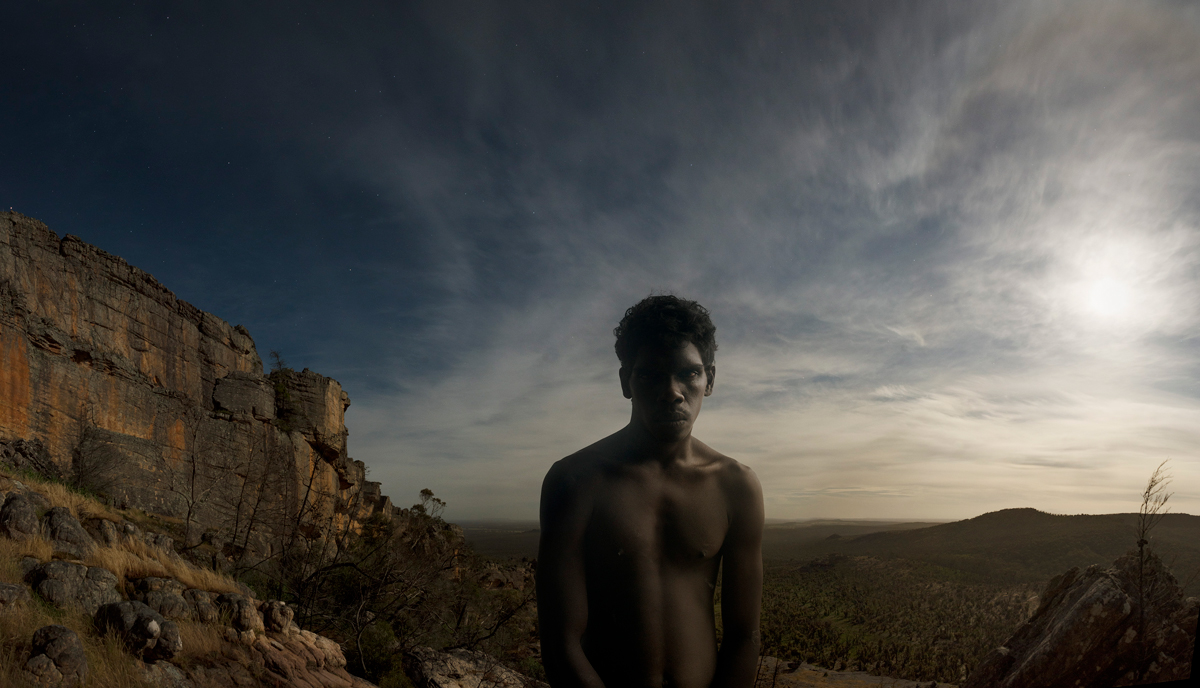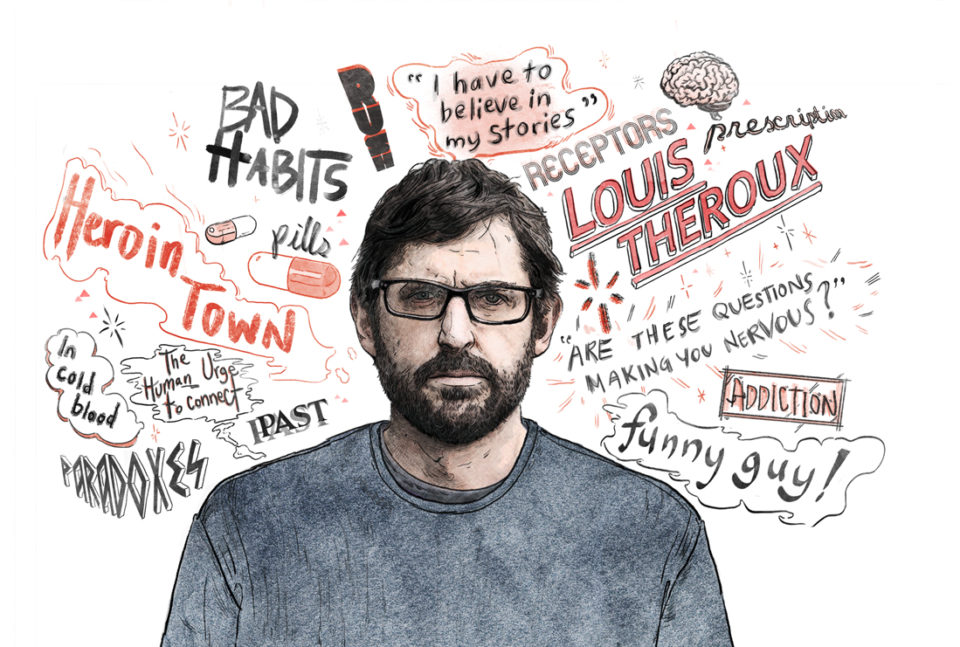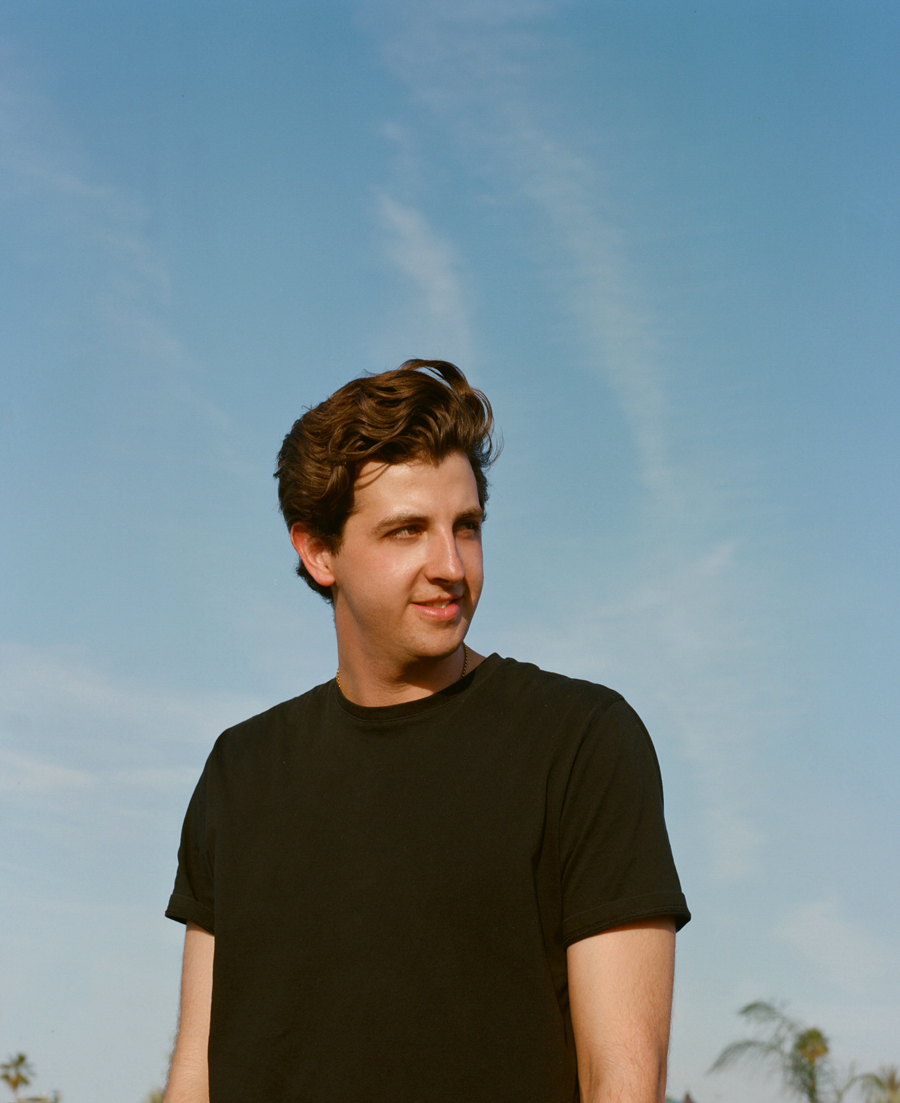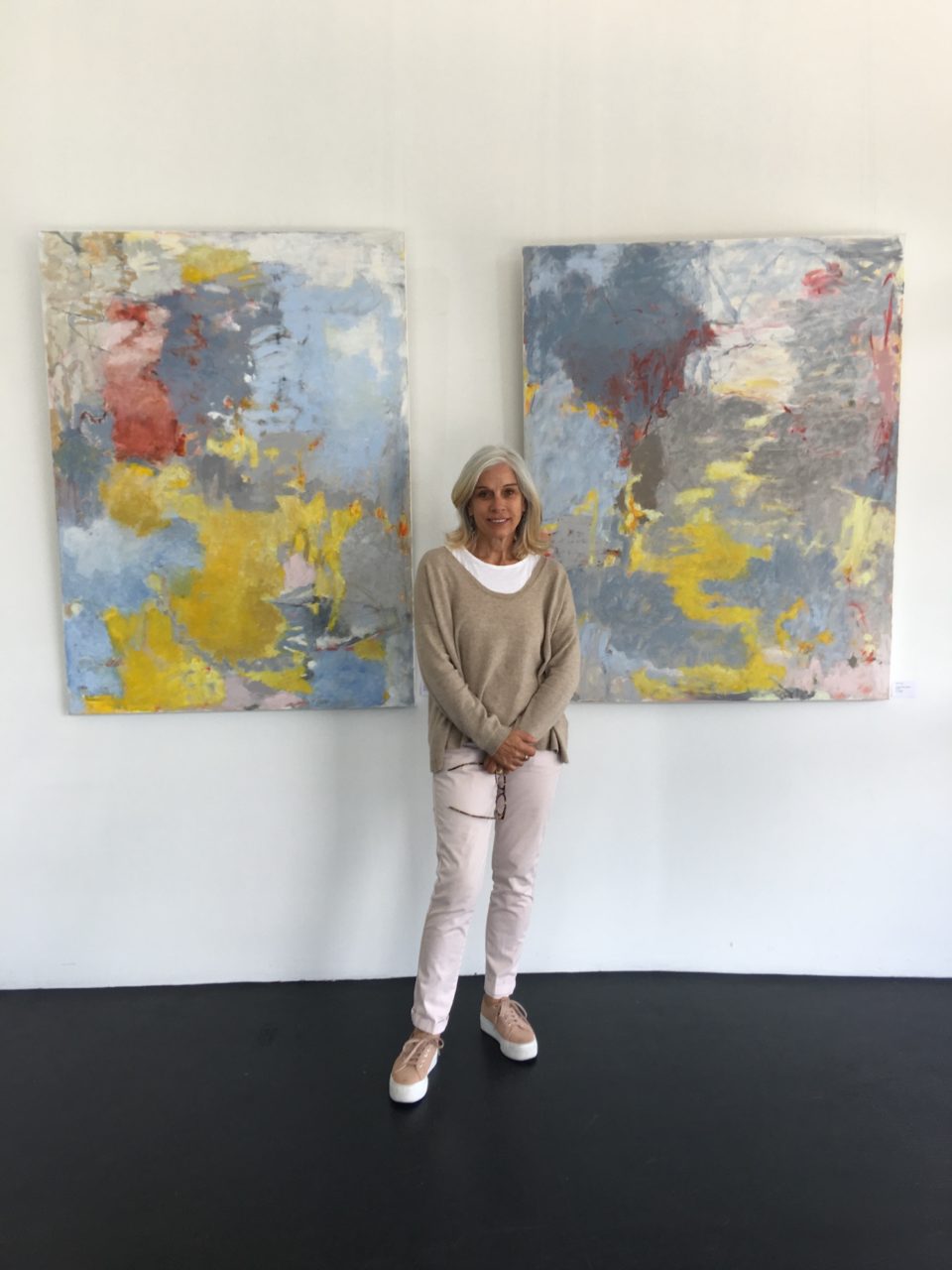A skinny brown boy stands shirtless in scrappy burnt out bush-land. He’s wielding a black rifle and we can’t see his face because it’s covered in a red balaclava. Peering a little closer, you see the balaclava is made of flowers and it’s crawling with bees.
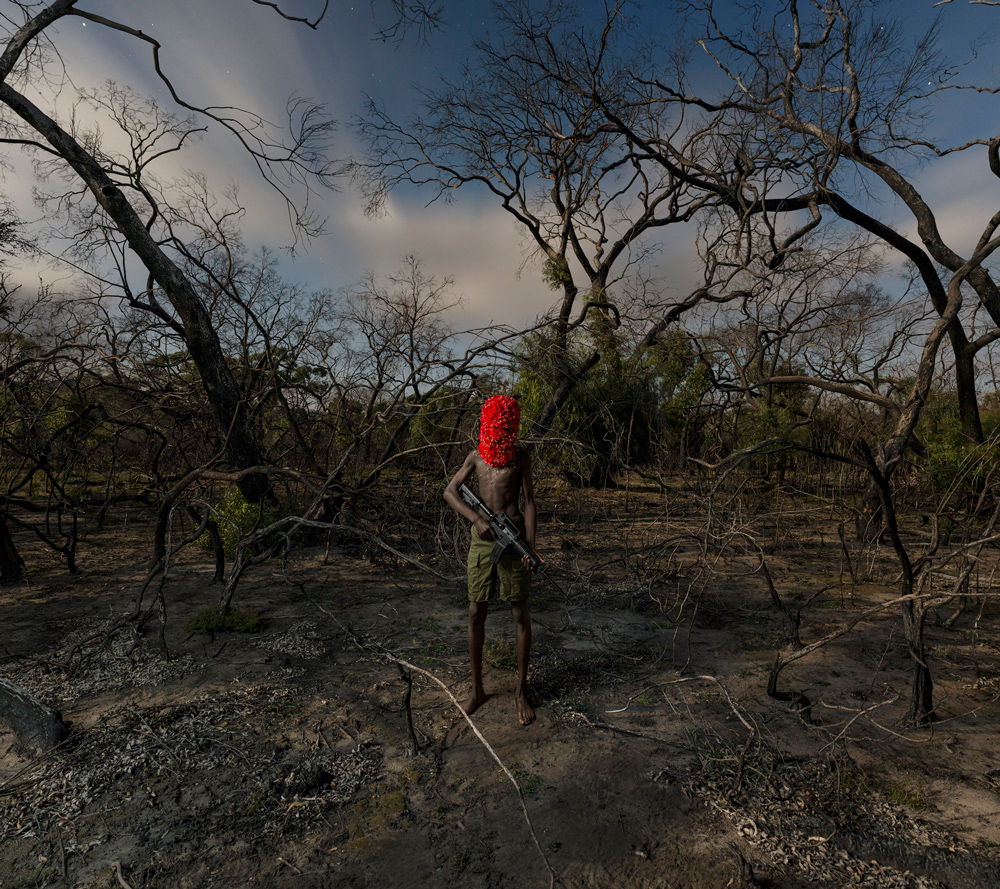
Jeremy Blincoe’s ‘Tropic of Chaos’, 2015, photographic print, 100 x 112 cm
This photograph,
Jeremy Blincoe recently won Campbelltown’s Fisher’s Ghost photography prize for this startling image. He’s the creator of many such dark and provocative works, technically pristine photographs that are highly staged, created by digitally layering images of props and models onto often stunning natural landscapes.
There are images like Trying to Find a Balance which shows a sooty ballerina twirling atop a pile of burning car tyres in a post-apocalyptic landscape; or Bound depicting a young girl tightly constrained in pearl-coloured straightjacket, almost dissolving into the white icy cliffs in the background.
To read Blincoe’s written statements about the ideas and motivations behind these stylized images is to get a little lost in abstractions, art lingo and manifestos about humanity, narcissism and environmental destruction. And so it’s a pleasant surprise to meet him and find a modest young man in a baseball cap. He’s plain-spoken with a friendly Kiwi accent as he leads the way into his home in Melbourne’s inner north. We enter through the double garage at the front, a space housing drying laundry, bikes and props, like the black tutu seen on the apocalyptic ballerina. “It’s lucky I’ve got all this room for my junk,” he says with a smile.
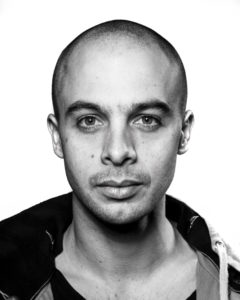
Jeremy Blincoe
Born and raised in Auckland, the 36-year-old Blincoe has already had fourteen solo exhibitions and won a number of prestigious prizes – including the 2017 Brisbane Art Prize with it’s $10,000 purse, for
He then spent several years staging and shooting images for big campaigns in New Zealand but still found it “bloody hard” to break into the field when he moved to Australia in 2008. Along with other odd jobs to support himself, including house-painting and commercial photography, Blincoe found himself working for artist and sculptor David Bromley, which set him on a path towards making his own art.
As a seasoned interviewer, it’s surprisingly rare for a person I’m profiling to ask questions back to me. Most artists and writers and filmmakers (rightly) treat the interview as their moment to speak uninterrupted, to talk at length about their own ideas and their particular process. And yet it’s part of Blincoe’s unwitting, and perhaps shy, charm that he treats our conversation as a real exchange where I should take up equal space. He seems genuinely interested by my writing life, the books I read, the films I like, how long it takes to make a book. It takes constant effort to keep turning the focus back on to him.
Hanging on a wall in his open-plan living room is a large framed copy of Tropic of Chaos. Standing this close to it, you can really see the bees. “I had to get the apiarist in from the Collingwood Children’s Farm to do the bees,” says Blincoe. He speaks so quietly it’s often difficult to hear his short sentences. There are long pauses and he needs prodding to get him to speak about the specifics of his work.
“This picture took me a long time to do and like all my work, we made it in multiple steps,” he says, and then after more prodding adds: “I shot the background in the Grampians in moonlight. That was a bit tricky because you have to be patient with the moon. And then we shot a mannequin with a mask and the bees in the studio. And then another day I got my friend’s young son to come in.”
Images of this complexity can take weeks or even months to plan, stage, shoot and edit. But where do the ideas come from?
“With this one, I was reading a lot of environmental and political books at the time,” Blincoe says. “Authors like Naomi Klein and the philosopher John Gray, but that title was inspired by Christian Parenti’s book Tropic of Chaos: Climate Change and the New Geography of Violence. He talks about global warming and resource scarcity as a catalyst for developing nations.”
And the bees around the boy’s head, I wonder, what do they signify? “I guess the bees are kind of like the canary in the coal mine,” Blincoe explains. “There’s a colony collapse happening because of pesticides. The food we eat, 70 or 80 per cent of it comes from bee pollination and if the bees go, well, I don’t want to sound too dire, but I don’t know what we’ll do.”
He delivers this catastrophic message quietly and calmly (it’s no surprise to hear he meditates and doesn’t eat meat), though it’s obvious from his pictures that environmental degradation and the disconnection from nature are deep concerns. His own love of unspoiled nature fuels his passion for travel to remote locations and his plans to buy his first piece of property, a bush block in Bright, in northeastern Victoria. He’d like to live permanently in the country, but his girlfriend, a city barrister, “can’t or won’t” he says with an affectionate smile.
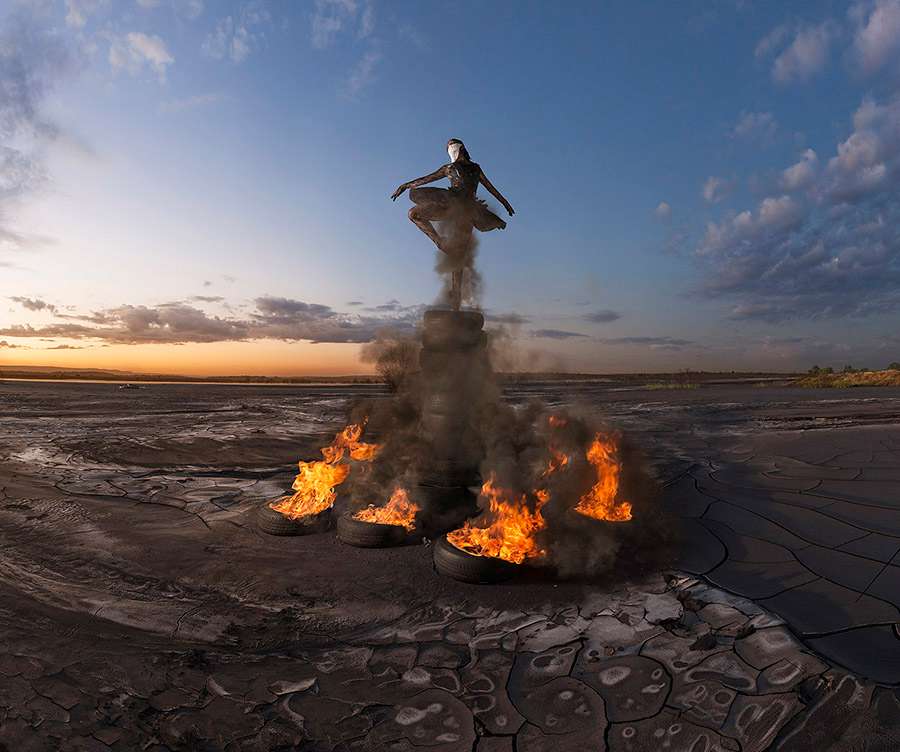
Jeremy Blincoe’s ‘Trying to Find a Balance’.
Blincoe looks shy when I ask if he’d like his art to be an agent of change. “It’s pretty hard to be an agent of change,” he says, “but if you can alter the viewer’s perspective even the tiniest amount – which is also pretty tricky – or make somebody think about something new…” his voice trails off. “I don’t know, I make the things I do because I’m curious about making sense of different issues. I read a lot, and make the works and my ideas evolve as I work, so it’s a process for me as well to grow what I know.”
How important is beauty to what he does? “Oh I think it’s pretty important,” he says with emphasis. “It has to be. You have to have both the ideas and the beauty. You’ve gotta entice people!”
When pressed, Blincoe can dutifully name other artists whose work has been formative or inspiring. He names photographers like Nadav Kander and Simon Johan, or New Zealand portrait painters C.F. Goldie and Gottfried Lindauer, whose historic paintings of Maori people have inspired Blincoe’s own new series of Indigenous portraits.
He talks admiringly of the environmentalist Australian contemporary artist Fiona Hall. (“I’d love to meet her one day, but how do you go about such a thing?” he asks, like any ordinary fan.) But what really lights him up is talking about books and the reading he does religiously every morning upon waking, and at night before sleep.
“I don’t look at a lot of photography,” he admits. “All my ideas, they come from reading. You get a unique vision from reading.”
Blincoe’s interest in ancient myths is evident in the symbolism contained in much of his work, and it’s no surprise he’s just started reading Jungian psychologist Erich Neumann. More unexpected is the fact he’s also fired up by Dostoevsky and Tolstoy.
“The reason I like those guys the most is that they’re kind of like philosophers, psychoanalysts, artists, all in one. They’ve got this firm grasp on human existence. It’s quite a remarkable skill-set to have all those things. Some of their books are really dense and real slow-burners,” he says, smiling slowly, “But for some reason, I quite like dense.”
Tropic of Chaos is on show as part of the Fisher’s Ghost Art Award Exhibition at the Campbelltown Arts Centre in Sydney until 14 December.



